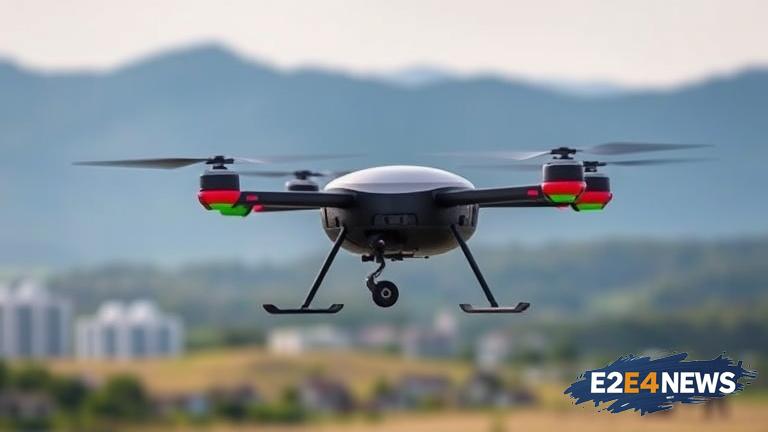The Federal Aviation Administration (FAA) has taken a significant step towards regulating the burgeoning electric vertical takeoff and landing (eVTOL) aircraft industry. In a move that is expected to have far-reaching implications for the future of urban air mobility, the FAA has released new guidelines for the development and certification of eVTOL aircraft. These guidelines, which have been in the works for several years, provide a framework for manufacturers to follow as they design and build eVTOL aircraft. The new guidelines cover a range of topics, including aircraft design, performance, and safety. They also provide guidance on the certification process, which is expected to be a critical factor in the widespread adoption of eVTOL technology. According to the FAA, the guidelines are designed to be flexible and adaptable, allowing manufacturers to innovate and experiment with new designs and technologies. The agency has also emphasized its commitment to safety, stating that the guidelines are intended to ensure that eVTOL aircraft are safe for both passengers and the general public. The release of the new guidelines has been welcomed by industry leaders, who see it as a major step forward for the eVTOL sector. Several companies, including Uber and Boeing, are already working on eVTOL projects, and the new guidelines are expected to provide a boost to these efforts. The eVTOL industry has been growing rapidly in recent years, with many experts predicting that it will play a major role in the future of urban transportation. The new guidelines are expected to help accelerate this growth, by providing a clear and consistent regulatory framework for manufacturers to follow. In addition to the guidelines, the FAA has also announced plans to establish a new office dedicated to the regulation of eVTOL aircraft. This office will be responsible for overseeing the certification process, as well as providing guidance and support to manufacturers. The FAA has also stated that it will be working closely with international regulators to develop global standards for eVTOL aircraft. This is seen as an important step towards ensuring that eVTOL technology is adopted consistently and safely around the world. The new guidelines have also been welcomed by environmental groups, who see eVTOL technology as a potential solution to the problem of urban air pollution. Electric propulsion systems are expected to be much cleaner and more efficient than traditional fossil-fuel powered engines, and could play a major role in reducing greenhouse gas emissions. However, some experts have raised concerns about the potential noise impact of eVTOL aircraft, and the FAA has stated that it will be working to develop guidelines for noise reduction. Overall, the release of the new guidelines is seen as a major milestone for the eVTOL industry, and is expected to play a critical role in shaping the future of urban air mobility. The guidelines are expected to provide a boost to manufacturers, and to help accelerate the development of eVTOL technology. As the industry continues to grow and evolve, it is likely that we will see significant advancements in eVTOL technology, and the new guidelines will provide a framework for these developments. The FAA has also emphasized its commitment to public engagement and outreach, and will be holding a series of public meetings and workshops to discuss the new guidelines and gather feedback from stakeholders. This is seen as an important step towards ensuring that the regulatory framework for eVTOL aircraft is transparent and accountable. In conclusion, the release of the new guidelines for eVTOL aircraft is a significant development for the industry, and is expected to have far-reaching implications for the future of urban air mobility. The guidelines provide a framework for manufacturers to follow, and are designed to ensure that eVTOL aircraft are safe and efficient. As the industry continues to grow and evolve, it is likely that we will see significant advancements in eVTOL technology, and the new guidelines will provide a foundation for these developments.
